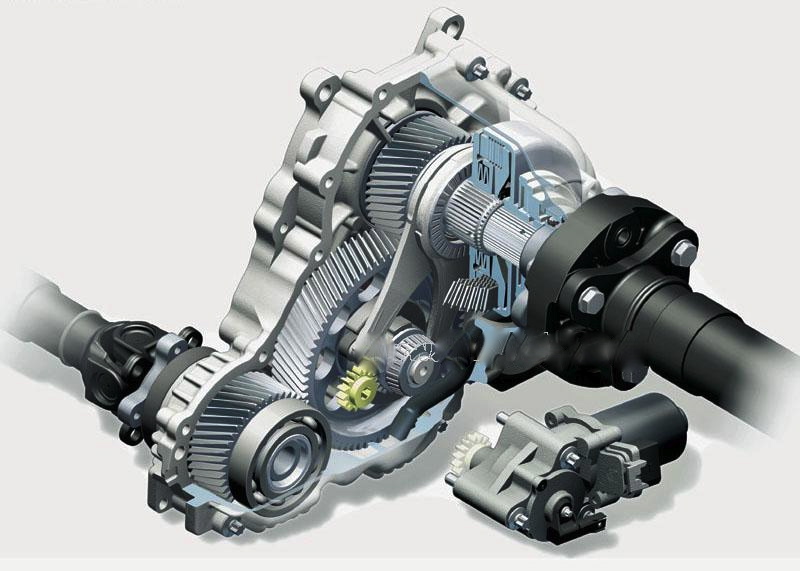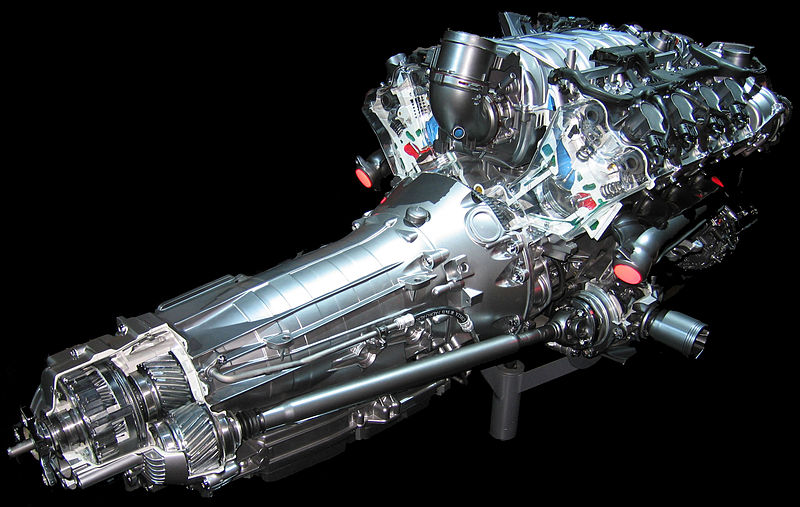For US market luxury brands, most of their upscale sedans offer the AWD option nowadays. However, not all AWD systems are created equal. Before our review, let’s look at what goes into a luxury sedan AWD system.
Differential: this is a device to let both sides of output rotate at a different speed, and still obtain torque. For example in your front-wheel-drive car, your front wheels are connected with a differential.
Open differential: when one side of output loses traction, there will be no torque available at another side at all. For example in a front-wheel-drive car with open differential, if your left wheel is stuck in snow, even your right wheel can touch the ground and does not slip, without additional help your car still can’t move. Most of main stream economic 2WD cars all have open differential.
Limited slip differential: by its name, when the differential “sense” there is a slip (or a tendency of going to slip), it will automatically transfer engine torque to the side that is not slipping. This can be done mechanically or electronically.
Center differential: this is for AWD cars only. Because the front wheels and rear wheels may not rotate at the same speed (actually 4 wheels rotate at a different speed when cornering), so besides a front differential (for front wheels) and a rear differential (for rear wheels), you also need a center differential to coordinate power distribution/rotation speed variance between the front and rear wheels. Here’s a very interesting point: if a AWD car’s front, center, rear differentials are all “open differential”, then if any one of the 4 wheels are slipping, without additional help (for example ABS brakes etc.), then all of the 4 wheels will have no power at all immediately.
Apparently for AWD cars, if the front/center/rear differentials are all limited slip type, this should be the optimal design. But it is not practical, because of the cost and weight. So depending on its application, different AWD cars may employ different AWD designs. Below are some brief reviews for some luxury brand’s AWD sedans.
(Image: BMW xDrive Illustration)
BMW xDrive: it does not have a “real” center differential at all. Actually it uses an electronic controlled multi-plate clutch coupling system to act like a center differential. Since when the car is not moving in a straight line, the clutch plates are rotating at different speed, which generates friction and abrasion, this system cannot be partially engaged for a long time (which will create excessive wear to the clutch plates), except if you are driving on a 100% straight highway. This means mostly that the BMW xDrive system works in an on-demand basis. Once the computer sense you are cornering or not going straight, it will disconnect the clutch and send all power to the rear wheel.
(Image: Mercedes-Benz 4Matic Illustration)
Mercedes-Benz 4Matic: this review is only for MB cars and the GLK class; not including the R/M/G/GL class. The car based 4Matic system has a planetary-gear center differential (which will work all the time, sending power to all 4 wheels), plus a mechanical limited slip device (some gear/clutch sets) to handle the case that front or rear wheels is slipping. But perhaps unknown to many people, the limited slip device MB used on their car based 4Matic system, can only handle an upper limit of 50Nm (36.9 lb-ft) torque only. This is really a small amount of strength, so it means the 4Matic AWD system is mainly to get you on the road when your parking spot is blocked by a pile of snow. If you want spirited AWD driving, then the car’s ABS or stability control system may help you more than the LSD. The mechanical LSD has an advantage: it is relatively simple and compact, so the car based 4Matic system can be integrated into the transmission case.
The CLA class AWD is different. It uses the Haldex system, which belongs to the on-demand type. Under normal driving conditions it acts like a FWD; only if the front wheel is slipping, then the multi-plate clutch will be engaged and use the coupling effect to transmission power to the rear wheels. Similar to BMW’s xDrive, because of friction and abrasion, extensive long time transmitting power to rear wheels will cause excessive wear to the Haldex system.
In part 2, we will take a look at Lexus and Audi’s AWD system.
Feel free to voice your opinion in the comment section below.
YouWheel.com is dedicated to bringing you the best automobile news, reviews,tips, test drives & technical talk, throughout the auto industry. Check out our blog at YouWheel.com





[…] good reads about different AWD systems … they discuss BMW, Mercedes, Lexus and Audi. Luxury sedan AWD system review ? part 1 – YouWheel.com – Your Ultimate and Professional Car Resource… Luxury sedan AWD system review ? part 2 – YouWheel.com – Your Ultimate and Professional Car […]
[…] some others but unfortunately not SH-AWD) – and a video showing the GS AWD driving in the snow… Luxury sedan AWD system review ? part 1 – YouWheel.com – Your Ultimate and Professional Car Resource… Luxury sedan AWD system review ? part 2 – YouWheel.com – Your Ultimate and Professional Car […]